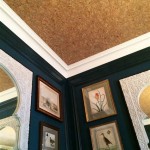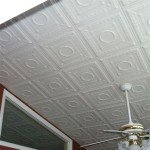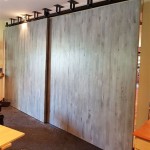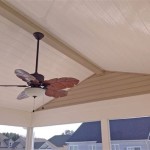What To Do With Old Tin Ceiling Tiles
Old tin ceiling tiles, remnants of a bygone era, often find themselves displaced during renovations or demolitions. Discarding these pieces of history is a lost opportunity, as they possess inherent value, both aesthetic and material. Instead of relegating them to landfills, a resourceful approach can transform these vintage elements into unique and functional items. Understanding the potential uses and necessary preservation steps is crucial before embarking on any repurposing project.
The appeal of old tin ceiling tiles lies in their intricate designs, embossed patterns, and the patina of age. These features contribute to their desirability in various applications, ranging from decorative accents to structural components. Furthermore, the relatively robust nature of the metal allows for a diverse range of adaptations, ensuring they can be incorporated into contemporary or vintage-inspired settings. The following sections will delve into practical methods for repurposing these architectural artifacts.
Assessing and Preparing Old Tin Ceiling Tiles
Prior to any repurposing endeavor, a thorough assessment of the tin ceiling tiles is paramount. This involves evaluating their structural integrity, identifying any surface contaminants, and determining the extent of any existing damage such as rust, dents, or peeling paint. The presence of lead paint, commonly used in older applications, necessitates extra caution and adherence to appropriate safety protocols.
The cleaning process will vary depending on the tile's condition and intended use. For tiles with minimal surface dirt, a mild detergent and water solution, coupled with gentle scrubbing, may suffice. Stubborn grime or rust may require specialized cleaners designed for metal surfaces. It is essential to test any cleaning solution on a small, inconspicuous area first to ensure it does not damage the original finish or paint.
If lead paint is suspected or confirmed, professional abatement services are recommended to ensure safe removal and disposal. Attempting to remove lead paint without proper training and equipment can expose individuals to hazardous levels of lead dust. Alternatively, if the existing paint is deemed stable and intact, encapsulation methods can be employed to seal the surface and prevent lead exposure.
Removing rust can be achieved through various methods, including wire brushing, sanding, or chemical rust removers. The chosen method should be appropriate for the type and severity of the rust. After rust removal, applying a rust-inhibiting primer is crucial to prevent future corrosion. Dents and other minor imperfections can often be straightened or concealed, depending on the desired aesthetic.
Once cleaned and repaired, the tiles may require sealing to protect them from further deterioration. This is particularly important if they will be used in areas prone to moisture or humidity. A clear sealant designed for metal surfaces will provide a protective barrier without obscuring the original finish. This preparation stage is fundamental to ensuring the longevity and aesthetic appeal of the repurposed tin ceiling tiles.
Creative Repurposing Ideas for Old Tin Ceiling Tiles
The versatility of old tin ceiling tiles allows for a wide array of repurposing possibilities. They can be transformed into decorative wall art, backsplashes, headboards, furniture accents, and even outdoor garden features. The embossed patterns and aged patina add character and visual interest to any project.
As wall art, individual tiles or groupings of tiles can be framed and hung, creating a focal point in any room. The frames can be chosen to complement the style of the tiles, whether it be rustic wood for a vintage feel or sleek metal for a more contemporary look. Alternatively, the tiles can be mounted directly onto the wall without frames for a more minimalist approach.
Tin ceiling tiles make excellent backsplashes in kitchens or bathrooms, adding a touch of vintage charm. They are relatively easy to install and clean, and their metallic surface reflects light, brightening up the space. When using them as a backsplash, it is important to seal them properly to protect them from moisture and grease. Grout can be used to fill the seams between the tiles, creating a seamless and waterproof surface.
As headboards, tin ceiling tiles can create a unique and eye-catching focal point in the bedroom. A single large tile or a collection of smaller tiles can be mounted onto a wooden frame to create a custom headboard. The tiles can be left in their original state or painted to match the room's décor.
Tin ceiling tiles can also be used to add accents to furniture. They can be incorporated into table tops, cabinet doors, or drawer fronts. The tiles can be cut to size and glued or screwed onto the furniture surface. Using them as furniture accents adds a touch of history and character to any piece.
In outdoor settings, tin ceiling tiles can be used to create unique garden features. They can be used as decorative panels in fences, planters, or garden sheds. The tiles can also be used to create birdhouses or other small garden structures. When using them outdoors, it is important to ensure they are properly sealed to protect them from the elements.
Beyond these readily apparent applications, more creative minds have adapted tin ceiling tiles into jewelry components, lighting fixtures, and even sculptural installations. The only limitation is often the imagination, allowing for truly one-of-a-kind creations.
Addressing Common Challenges and Ensuring Safety
Working with old tin ceiling tiles can present certain challenges, primarily concerning their condition and potential contaminants. As previously mentioned, lead paint is a significant concern that requires professional attention. Additionally, the metal itself may be brittle or prone to cracking, requiring careful handling and appropriate cutting techniques.
When cutting tin ceiling tiles, it is essential to use appropriate tools, such as tin snips or a metal-cutting saw. Wearing safety glasses and gloves is crucial to protect against sharp edges and flying debris. It is also advisable to work in a well-ventilated area to avoid inhaling metal dust.
Ensuring proper installation is critical for the longevity and safety of the repurposed tiles. When using them in structural applications, such as backsplashes or headboards, it is important to securely fasten them to a stable surface. Using appropriate adhesives and fasteners will prevent the tiles from loosening or falling off over time.
The weight of the tiles should also be considered, especially when mounting them on walls or ceilings. Using appropriate mounting hardware and ensuring the wall or ceiling can support the weight is essential to prevent accidents. For larger installations, consulting with a professional contractor or structural engineer may be necessary.
Finally, consider the overall aesthetic and functional requirements of the project. The patina and imperfections of old tin ceiling tiles are part of their charm, but it is important to ensure they complement the surrounding environment. By carefully addressing these challenges and prioritizing safety, old tin ceiling tiles can be transformed into beautiful and functional objects that will be enjoyed for years to come.

Repurposed Vintage Tin Ceiling Wall Decor

Repurposed Vintage Tin Ceiling Wall Decor

Repurposed Vintage Tin Ceiling Wall Decor

Prepping Antique Ceiling Tin Living Vintage

Repurposed Vintage Tin Ceiling Wall Decor

Before And After Our Kitchen Tin Ceiling Project Living Vintage

Great Ways To Repurpose Vintage Ceiling Tin Lora Bloomquist Create Ponder

Victorian Tiles Replace Old Fashion Ceiling Talissa Decor

Home Dzine Craft Ideas Plastic Ceiling Tile Becomes Vintage Clock

Tin Ceilings Sponge Jet
Related Posts








